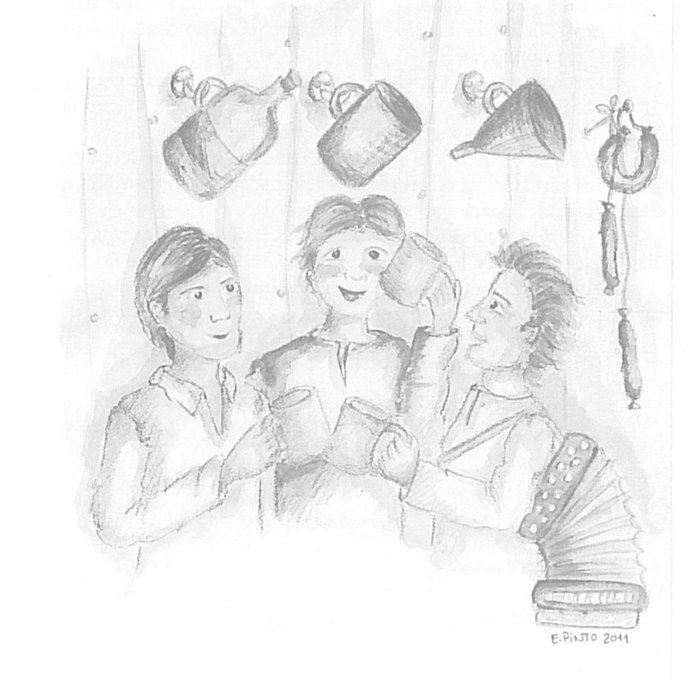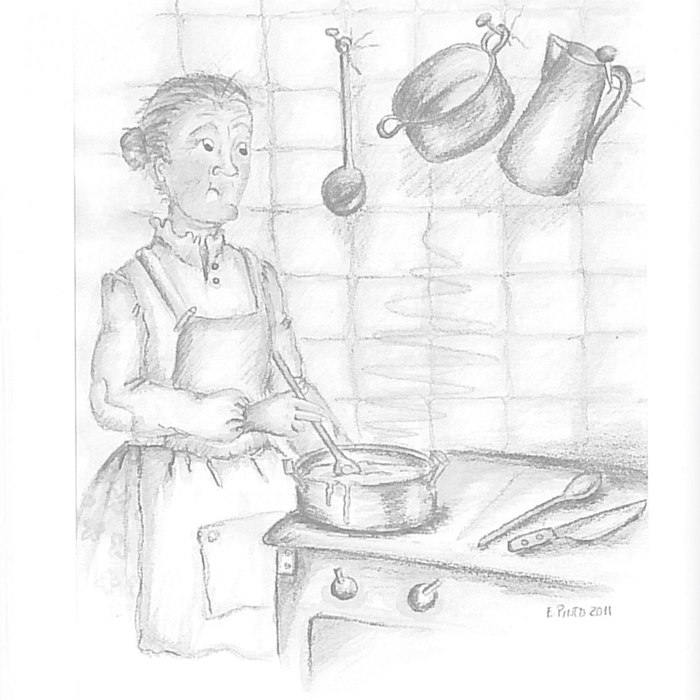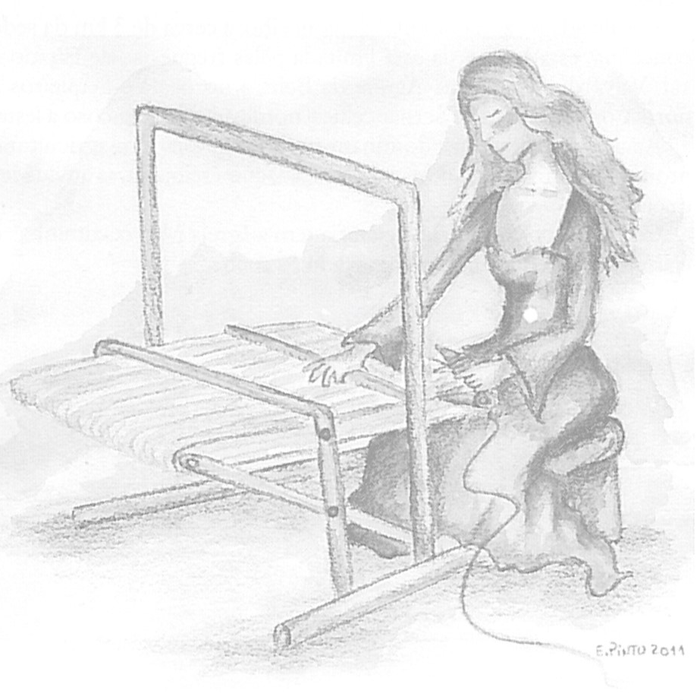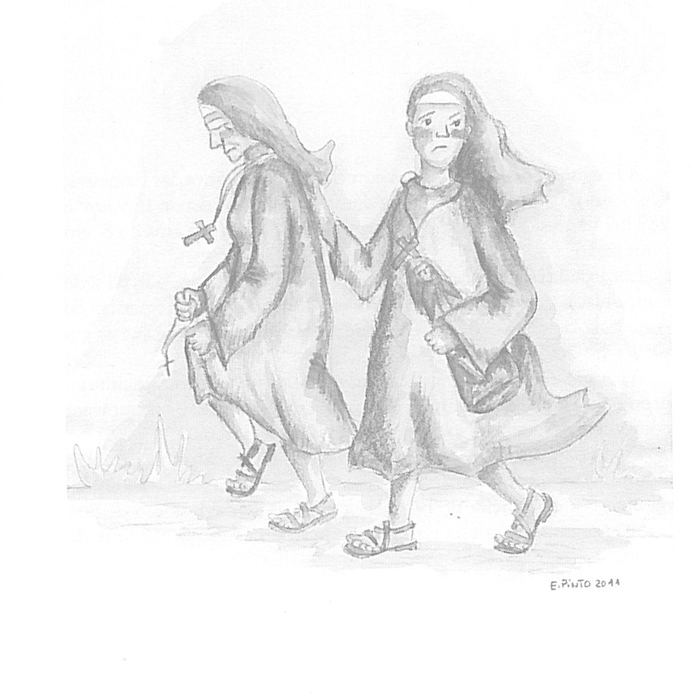
Discover the
Stories

Inspection day
In the old days, going to the military inspection was a day of great festivity for the young men of the municipality. This story, told by his uncle Américo Correia, took place in the first half of the 20th century. At the time, it was customary for young people to gather in each town and walk to the county seat. Together they sang songs and were accompanied by the sounds of concertinas. Everywhere they went, there was always a stop at the tavern and a few cheers, well washed down with the region's good wine, were said to greet the respective parishes. One year, the boys from Forninhos, Dornelas and Cortiçada were already celebrating in the Coruche tavern when one of them, certainly drunk on wine, started shouting: - Viva Forninhos! - Hooray! - the others replied. - Long live Dornelas! - Hooray! - Long live Cortiçada! - Long live Coruche! - Die Coruche! At that moment, the tavern fell silent and, after a few minutes, the bell rang. As soon as the macabre words were uttered, one of the boys ran to the church to gather the people. The people responded promptly. In no time at all, a violent battle broke out between the town, which felt insulted, and the young men from the neighboring parishes, who ended up fleeing, but not before receiving a severe flogging. For years, the young people of these parishes changed their route, going via Valverde. But camaraderie eventually won out and the tradition returned to the way it was, with the youngsters once again passing through Coruche, first timidly and quietly, then already partying with fanfares setting the pace.

Legend of the Living Dead of Valverde
The story told below follows the famous ‘Battle of Coruche’, as the Liberals called it, or ‘Battle of Aguiar da Beira’, as it became known to the Miguelists, which took place on 9 January 1827 and was won by the Liberal forces. As a result of this violent battle, the skirmishes of Valverde and Barracão followed, culminating in the flight of the Marquis of Chaves, the Miguelist leader, to Spanish lands. As tradition dictates, the dead had to be buried after the battles. The fighting had taken place in both Valverde and Coruche, so it wasn't clear where to open the graves. As there was no consensus, they decided to open them on the battlefield, so that the bodies of the soldiers killed in battle could finally rest in peace. There was a lot of hustle and bustle and, in the midst of the confusion and tiredness, many of the wounded ended up being buried as well. The people of Valverde say that, for a long time, people avoided these fields because, whenever they passed by, they would hear the following lamentations from the soldiers: ‘We forgive those who killed us, but not those who buried us’.

Legend of the Lord of Castelinho
A woman from Aldeia Rica, in the municipality of Celorico, was tormented for nights on end by strange dreams: somewhere, surrounded by cliffs, moss and brambles, an image of the crucified Lord appeared to her. She would wake up in the middle of the night, flooded with water, as if she were in a nightmare. She would get out of bed without waking her husband, say an Our Father and a Hail Mary and get back into the sheets. But the dream became so frequent that the woman, Ana Antunes, ended up telling her husband about it. Annoyed by his wife's concerns, the man asked her: -What the hell is wrong with you, woman? - The image of Our Lord is covered in brambles and moss, lost in a crevice, man! The husband shrugged his shoulders, putting aside the worries that overwhelmed his wife. One day, despite all the man's disbelief, they ended up leaving. They set off in vain in search of the figure, she on top of the jerico and he on foot. The man, tired of walking and full of questions, asked the woman where they were going. - Let the donkey go on her way. I have a hunch she's going to go straight,’ said the woman. They walked for several leagues without speaking to each other, when the animal stopped at Ancinho, near some large crags. As it was hot, both man and animal were thirsty and tired. The woman soon came face to face with the image engraved on the rock of Christ crucified, wrapped in moss and brambles. - So, my unbeliever, I didn't tell you! The man didn't have the courage to reply, but knelt down and prayed. The people, with great joy and devotion, immediately tried to give him a more human form and gave him the name Senhor do Castelinho (Lord of the Little Castle), because he was on top of some cliffs, where there was a masonry castle.

The legend of St Torcato da Sapateira
At the beginning of the 20th century, when the Sapateira estate was still well populated, but the chapel was no longer being worshipped in and was already showing signs of abandonment, a woman named Dialina, passing by and seeing the door wide open, thought that the place was suitable for gathering her animals. If she thought so, she did it better and, that same day, she went to the landlord and asked him for the authorisation she wanted. The landlord, seeing no impediment, replied: -For me, do what you want, but first don't forget to remove the St Torcato. The woman, satisfied, accepted these words and returned to the chapel, from where she removed the saint. As she was very thrifty - necessity teaches us to be - she looked at the saint and thought that its wood could be used to heat the fireplace that night. She took her axe and split it into chips, which she then set on fire. As it was already suppertime, he decided to make some grated porridge to settle his stomach. But while he was cooking the porridge, it took on a bluish colour and a horrible smell. The woman, furious at the waste, threw the porridge to the pigs. In the morning, when she woke up, she was surprised by the silence. She got up and went to see the animals. What was his surprise when he found the pigs all dead! As soon as the people learnt about it, they immediately said that it was punishment for burning the saint. The truth is that, whether it was due to illness or poisoning, or to St Torcato's interference, the chapel was never occupied.

Legend of the Lezíria Moorish Rock
As has been the case in many parts of the county, the Moor has never ceased to be a part of our imagination. That's why it's no wonder that next to the remains of the old Lezíria castle there's a crag that people call ‘Penedo da Moura’ (Moorish Rock). It is said that here lived a young and beautiful enchanted Moor, left behind by the Moor Al-Mançur, who spent his days weaving marvellous skeins of gold on his ivory loom. One day, passing near the crag, a peasant spotted a beautiful field of wheat. In fact, it was the golden threads woven by the beautiful Moor, who also knew the art of camouflage and thus prevented her treasure from being stolen. Only this time, as the man found the wheat so beautiful, he couldn't resist the temptation and pocketed two handfuls. Returning to the village, he stopped off at the tavern and, after a few good drinks, showed off his find. The men present were wide-eyed! On the table were pure gold nuggets! Stunned, the peasant ran off in the direction of Penedo da Moura, but saw nothing more. In place of the field was a bald hill. Only one voice reached his ears, the voice of the beautiful maiden who never tired of repeating: - You should have taken advantage of it, my country boy! It is said that for a long time the man cursed his luck for being so ‘blind’.

The legend of Abadense bread
The village of Ponte do Abade has long been known for its exceptional bread. The tradition dates back to the time when a woman called Amália lived in the quiet village and loved to experiment. The fact that she liked to invent was a remarkable phenomenon in itself, but her skills for innovation left a lot to be desired, which is why she was known as ‘the clumsy scientist’. Perhaps it was her age, perhaps it was her genius, the truth is that she was very clumsy and constantly forgot things, because whenever she set out to do an experiment she never knew how she was going to do it, constantly changing the formulae. One stormy day, she cosied up by the fireplace in her house and started eating a loaf of bread she had bought at the village bakery. As he chewed, he found it tasteless. His ingenuity immediately started thinking. -I know! - she exclaimed. - I'll speak to the bakers! This bread has to change flavour!!! The woman had no luck and ran for her life. However, maintaining her tenacity, she returned that same evening. After much insistence, the bakers finally allowed her to carry out the desired experiment. From then on, the bread was great and the bakery had more customers. The bakers wanted to thank her and ask her what the magic formula was, but they found poor Amalia dead on the floor of her house. It was a terrible day for the bakers! The lady had died with her secret. But some miracle must have happened, because since then the bread from Ponte de Abade has not left its good reputation in the hands of others, and is still as delicious as it was on the night of the ‘scientist’ Amália's invention!

Legend of the Convent of Sisimiro
By the year 982, there was a convent of Benedictine nuns in Quinta das Lameiras, known as the Convent of Sisimiro. On this date, the famous and fearsome Moorish general Al-Mançur and his hosts crossed the Douro to the left bank. Their trail of blood was enormous. Having destroyed Lamego, they advanced towards Trancoso. On the way, they razed the Convent of Areas to the ground, where they martyred many of the nuns. After crossing the Pêra mountain range, they reached the convent of Sisimiro. A large number of the nuns suffered martyrdom, while others managed to escape, taking with them an image of Our Lady. As they fled, they sought shelter in the woods where they wandered. They ended up finding a cave or lapa where they kept the image, which withstood the harshness of the centuries for some 515 years. It was this image that gave rise to the legend of Senhora da Lapa.